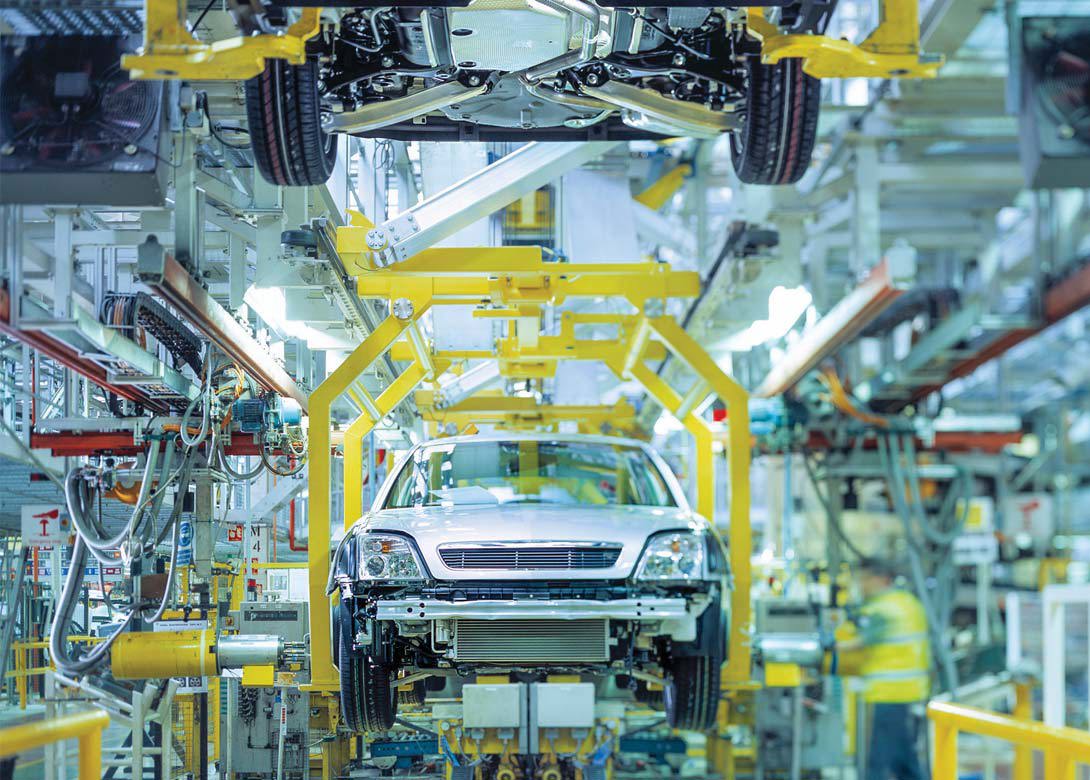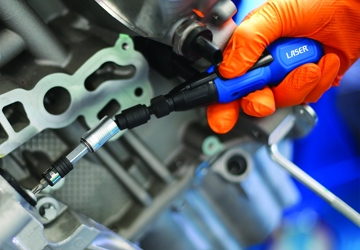

Lightweight construction is the future. Hardly any market segment is developing as dynamically as industrial lightweight construction and hardly any topic plays a similarly important role when it comes to innovations. Here Rüdiger Frisch, technical manager, vehicle lightweight solutions, west Europe at 3M, explains the significance of adhesives for lightweight construction and points out the challenges, as well as the solutions available for this sector.
Whether for aviation, rail transportation or elevators – wherever moving loads are involved – weight reduction plays a major role. More and more companies are therefore focusing on light materials and not just to strengthen their competitive position. Every gram counts – especially in the transportation industry. After all, car manufacturers throughout the world are under increasing pressure to produce vehicles that are kinder to the environment. The less a vehicle weighs the less carbon dioxide it emits. Today we know that 10g of CO2 per kilometre is saved for every 100kg of reduced weight. This figure adds up to several tonnes over the entire lifespan of a vehicle, thus making a major contribution towards climate protection.
Adhesives key for lightweight construction
This is why the demand for lightweight material is steadily increasing in the industry. Lightweight components are manufactured from materials such as carbon fibres, high strength steels or innovative aluminium and magnesium alloys.
Manufacturers face the challenge that conventional joining techniques such as welding or riveting are often no longer possible in such cases. This applies all the more if the materials are used in so-called sandwich constructions. The solution is adhesives. They are able to connect the new materials, even if mixed. That is why new types of adhesive technology are becoming more important due to this increasing lightweight trend. Lightweight constructions would not be possible without them. What many people don’t know – even now an automobile contains up to 15 litres of adhesive… and counting.
Choosing the right adhesive
One of the major challenges for the industry is bonding materials durably without weakening the mating parts. The latter case occurs above all with mechanical fastenings such as rivets or bolts and with thermal fastenings by welding. Therefore, it is hardly surprising that, of all fastening techniques, adhesives have developed most rapidly in the last few decades. Nowadays there is a huge selection of different adhesives, but not all adhesives are the same. A good understanding of materials and processes is important in order to choose the right adhesive. The known types of adhesives can be classified according to their curing mechanism and/or according to the chemical basis (for example epoxy, polyurethane and acrylic adhesives). For instance helicopter rotor blades are bonded with epoxy resin. These adhesives are highly chemically resistant while featuring a very long and solid durability. When it comes to bonding plastic material to metal, you should however opt for acrylic systems. And if, for example, glass is to be bonded in an automobile, then polyurethane systems are the preferred choice. The important thing is using the right adhesive for the right application. Good solutions for many challenges As a general rule, the fastening technique to be used should already be taken into account in the design. Adhesives can provide very solid and stable bonds in many areas. The use of adhesives, however, frequently requires a modification of production processes and poses substantial challenges for manufacturers as they have to gradually adapt their processes. Intelligent adhesive systems are able to optimise production processes and there are already many very good options for many of the challenges. For instance, most sheet metals used in the automotive industry are slightly oily to enable forming processes. These oils generally have to be removed before adhesives are applied, which constitutes additional work. Now, a two part adhesive is available that can be applied directly to the oily substrate without the need for prior cleaning. Due to its special formulation, this adhesive absorbs the oil so that the degreasing process can be dispensed with. Moreover, the new adhesive also has a positive effect on workplace protection as many degreasing processes involve solvents.
Adhesive films
Most adhesives are pasteous or liquid. Particularly interesting for lightweight construction are new types of adhesive films that enable fast and automated application. They can, for example, be used for flanged seams of doors, hoods and trunks of automobiles. Their advantage is that virtually no reworking is required, which makes their application very efficient. Moreover the film has a precisely defined thickness or strength. That is particularly important when bonding different materials. For this application, it is crucial the materials are galvanically separated in order to prevent corrosion. Due to its defined thickness, the adhesive film ensures the materials do not come into contact with one another and isolation is provided. Apart from bonding, the use of adhesive technology therefore offers further positive properties for the components, including protection against corrosion, isolation, vibration absorption or the compensation of different bonding part dynamics.
Bonding of mounts
Already today, thousands of mounts in an aircraft are bonded with adhesives, including cables, conduits or insulation elements. This is due to the fact adhesives are the only possible solution for bonding composite components. The use of screws and rivets can lead to structural damage, which may put the entire mechanical stability of the component at risk. However, one of the major disadvantages when using adhesives for bonding mounts is that the bonding process is very time-consuming. Each mount has to be attached in several steps – from applying the adhesive and positioning the mount, to attaching and removing the fixing device. A new instant, two part adhesive provides the solution to this problem as it removes the need for additional fixation. Most of all, this helps to save valuable time – sometimes up to several days for a single aircraft. It also helps to reduce waste because many of the fixing devices are not reusable.
This means that adhesives contribute to saving time and money and also the environment. In addition, the new two part adhesive is very versatile and can also be used in a variety of applications in other sectors, such as the automotive, marine or electric industries.
The importance of adhesive solutions will increase even further in the future as lightweight construction will continue to remain in trend. One major reason for this is that the regulations for CO2 reduction will become even more stringent in the future. This means it will not be possible to meet these requirements without innovative adhesive systems.
About the author
Rüdiger Frisch has been working for 3M for many years. He is technical manager for vehicle lightweight solutions, west Europe and an expert for adhesive technologies.

Having spent a decade in the fastener industry experiencing every facet – from steel mills, fastener manufacturers, wholesalers, distributors, as well as machinery builders and plating + coating companies, Claire has developed an in-depth knowledge of all things fasteners.
Alongside visiting numerous companies, exhibitions and conferences around the world, Claire has also interviewed high profile figures – focusing on key topics impacting the sector and making sure readers stay up to date with the latest developments within the industry.





